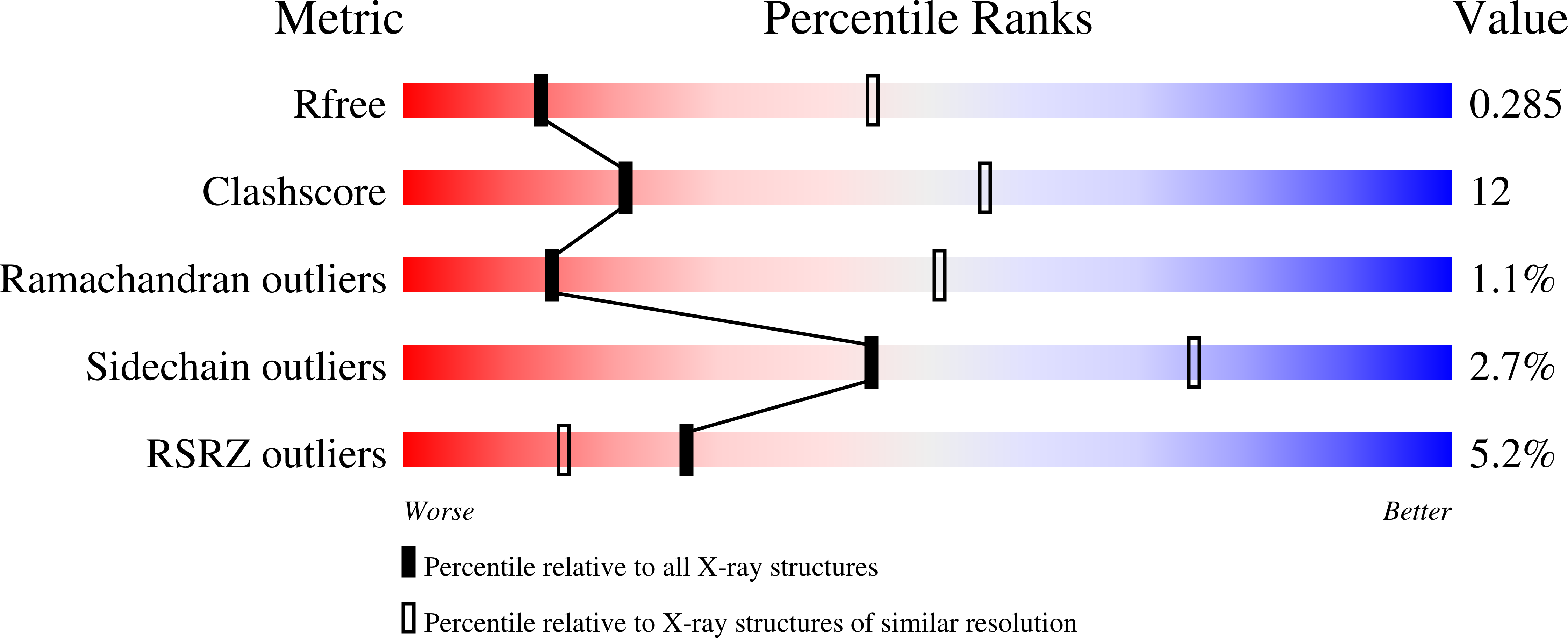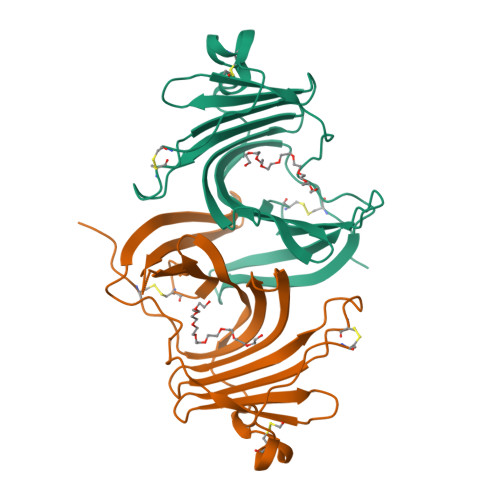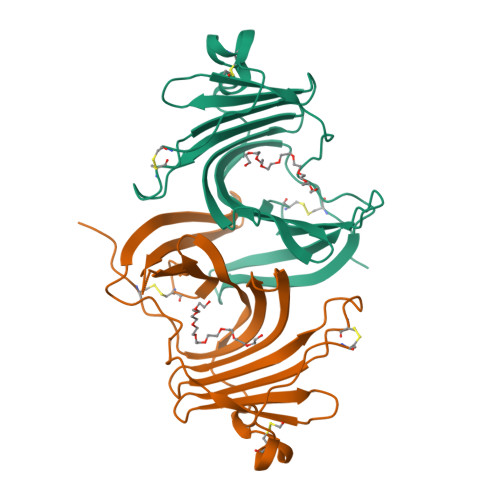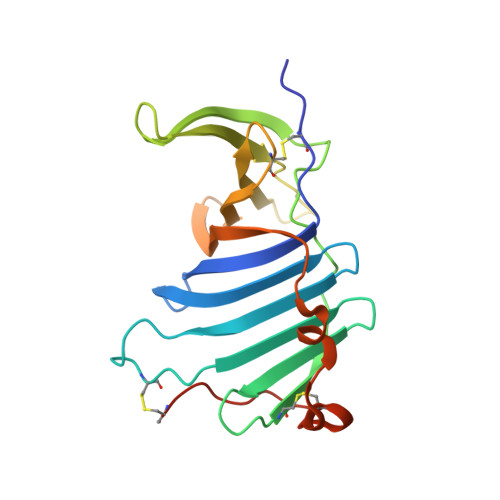Crystal structures of human lysosomal EPDR1 reveal homology with the superfamily of bacterial lipoprotein transporters.
Wei, Y., Xiong, Z.J., Li, J., Zou, C., Cairo, C.W., Klassen, J.S., Prive, G.G.(2019) Commun Biol 2: 52-52
- PubMed: 30729188
- DOI: https://doi.org/10.1038/s42003-018-0262-9
- Primary Citation of Related Structures:
6E7O, 6E8N - PubMed Abstract:
EPDR1, a member of the ependymin-related protein family, is a relatively uncharacterized protein found in the lysosomes and secretomes of most vertebrates. Despite having roles in human disease and health, the molecular functions of EPDR1 remain unknown. Here, we present crystal structures of human EPDR1 and reveal that the protein adopts a fold previously seen only in bacterial proteins related to the LolA lipoprotein transporter. EPDR1 forms a homodimer with an overall shape resembling a half-shell with two non-overlapping hydrophobic grooves on the flat side of the hemisphere. EPDR1 can interact with membranes that contain negatively charged lipids, including BMP and GM1, and we suggest that EPDR1 may function as a lysosomal activator protein or a lipid transporter. A phylogenetic analysis reveals that the fold is more widely distributed than previously suspected, with representatives identified in all branches of cellular life.
Organizational Affiliation:
1Princess Margaret Cancer Centre, Toronto, M5G 1L7 ON Canada.

















